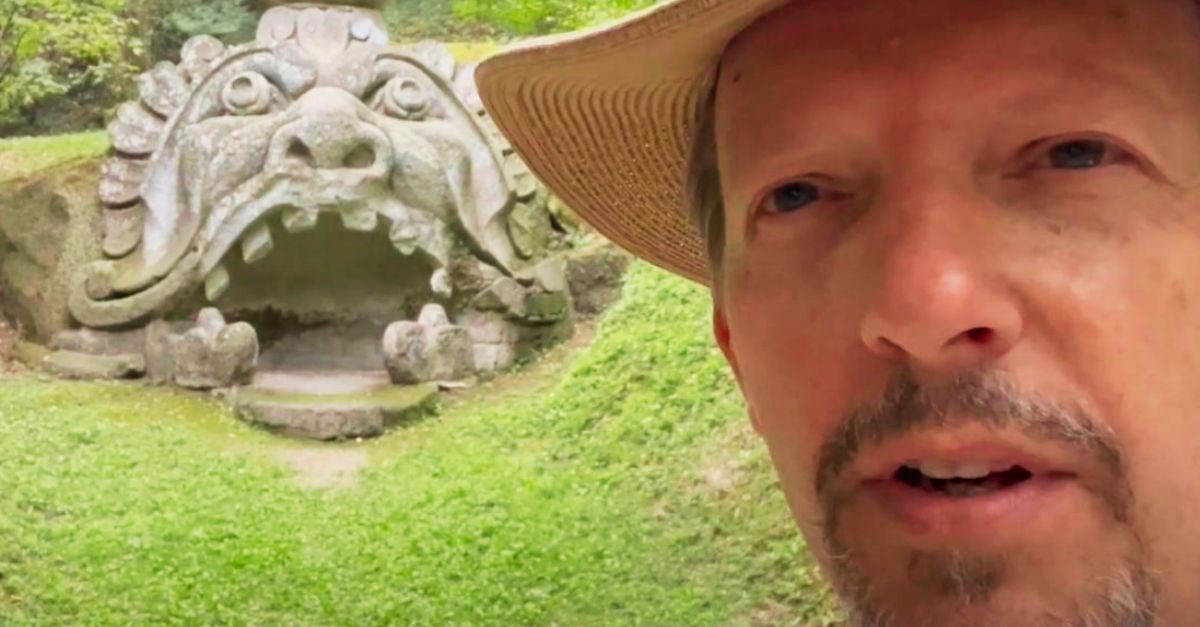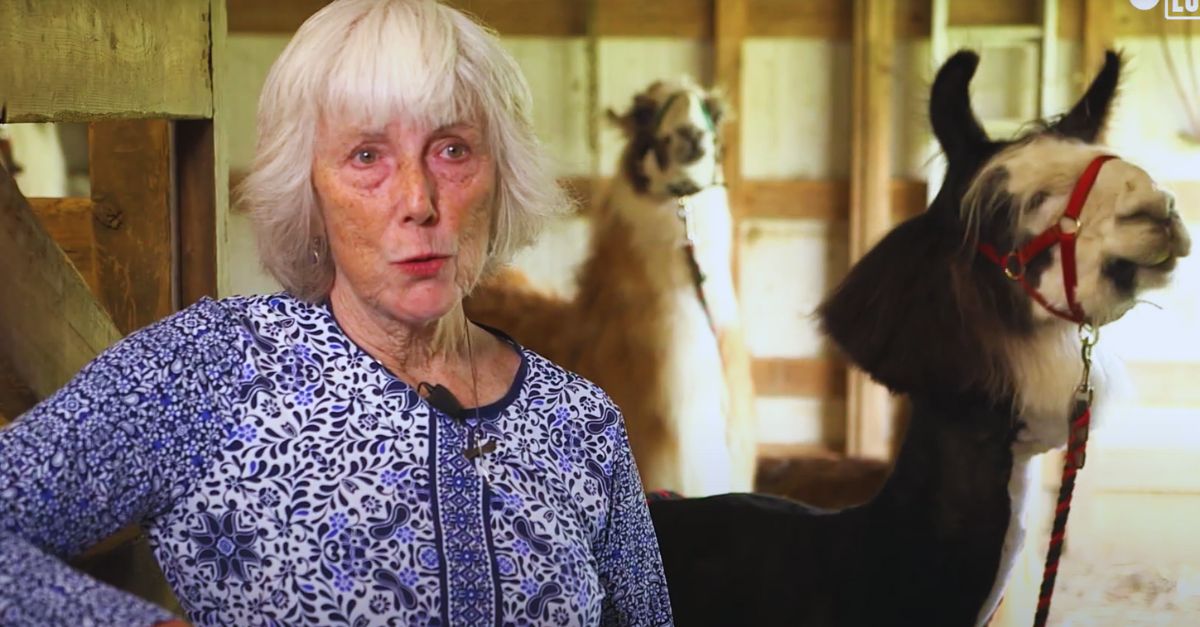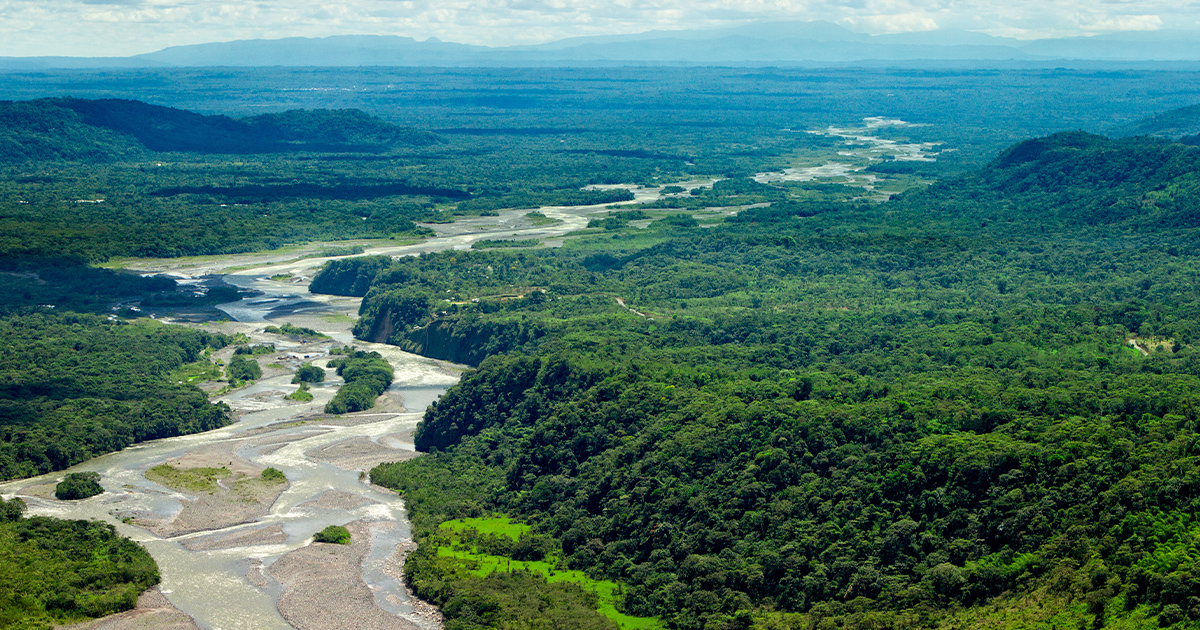Stone Secrets
Some places have stories you can feel but can’t quite put into words. Italy's Park Of Monsters is one of them. Folks often find themselves wondering about the meaning behind its strange shapes and quiet atmosphere.

Ancient Foundations
The Etruscans ruled central Italy from approximately 900 to 300 BC. These ancient people discovered something magical about the soft peperino rock beneath their feet. They crafted elaborate underground tombs, thereby establishing a tradition of living stone sculpture that would endure through the centuries.
 Jean-Pol GRANDMONT, Wikimedia Commons
Jean-Pol GRANDMONT, Wikimedia Commons
Roman Heritage
When the Roman legions conquered the region around Bomarzo, they encountered territory rich not only in strategic value but also in industrial activity. Notably, Domitia Calvilla (Domitia Lucilla Minor), the mother of future Emperor Marcus Aurelius, is believed to have owned extensive brickmaking factories near Bomarzo.
 Shadow Fixing, Wikimedia Commons
Shadow Fixing, Wikimedia Commons
Etruscan Legacy
Fast-forward to the Renaissance, when artists wandered among crumbling Etruscan ruins and felt history speaking through broken stone. These mysterious remnants inspired Orsini to include a fake Etruscan tomb in his garden, deliberately collapsed and weathered to look ancient. His creation would connect to Italy's deepest roots.
Orsini Inheritance
The year 1542 brought drama worthy of a Shakespeare play when twenty-year-old Pier Francesco Orsini battled his brother Maerbale for control of Bomarzo. Behind the scenes, Cardinal Alessandro Farnese pulled political strings, ensuring Pier Francesco's victory. The Orsini family tree was heavily laden with power.
 Didier Descouens, Wikimedia Commons
Didier Descouens, Wikimedia Commons
Marriage Alliance
Love and politics danced together the moment Orsini wed Giulia Farnese. She was the sister of Pope Paul III, bringing papal connections and Farnese wealth into the marriage. More importantly, Giulia possessed the cultural sophistication that profoundly influenced her husband's artistic vision for their estate.
 Luca Longhi, Wikimedia Commons
Luca Longhi, Wikimedia Commons
Military Campaign
War called, and Orsini answered as a condottiero, a professional military commander in an age when warfare was business. The Italian Wars turned the peninsula into a chessboard where France, the Holy Roman Empire, and various states moved armies like pieces.
Battle Captivity
Everything went wrong during those brutal French campaigns of the early 1550s. Historical accounts state that as a general in the Pope’s army, Orsini was taken prisoner by the Germans. The horror deepened when news arrived that his dear friend Orazio Farnese had fallen in combat.
 Ambito Fiammingo ALTRE ATTRIBUZIONI De Holanda Francisco, Wikimedia Commons
Ambito Fiammingo ALTRE ATTRIBUZIONI De Holanda Francisco, Wikimedia Commons
Personal Loss
Freedom came with a terrible price as soon as Orsini returned to Bomarzo. Giulia died in 1560, just as they were rebuilding their life together. Scholars believe Sacro Bosco's haunting sculptures, filled with death imagery and underworld references, became his stone therapy sessions.
 Livioandronico2013, Wikimedia Commons
Livioandronico2013, Wikimedia Commons
Garden Vision
Instead of following Renaissance rules about perfect geometric gardens, Orsini chose rebellion. He wanted visitors to feel shocked, not soothed, to encounter literature leaping from stone rather than manicured beauty. His radical vision challenged aristocrats' expectations of garden design. Monsters and mythical beasts would ambush unsuspecting guests.
 Gabriele Delhey, Wikimedia Commons
Gabriele Delhey, Wikimedia Commons
Architect Selection
Well, when genius meets grief, magic happens. Orsini recruited Pirro Ligorio, the architect who had completed Saint Peter's Basilica after Michelangelo's demise and built the water wonderland at Villa d'Este. This collaboration gave rise to a sculpture park that continues to puzzle and enchant visitors.
Construction Begins
Work commenced in 1547 with teams of skilled stoneworkers arriving at the Bomarzo site to begin the unprecedented project. Unlike traditional gardens that require importing materials, this project utilized existing volcanic rock formations scattered throughout the wooded valley. The construction process would span over three decades.
 Gabriele Delhey, Wikimedia Commons
Gabriele Delhey, Wikimedia Commons
Sculpture Creation
The team hired Simone Moschino, a skilled sculptor from Tuscany, to carve the fantastic creatures from existing volcanic boulders. He is believed to have been responsible for carving many of the park’s most striking features, working with the massive blocks of peperino (a local volcanic stone).
 Etienne (Li), Wikimedia Commons
Etienne (Li), Wikimedia Commons
Literary Inspiration
Did you know that Orsini drew heavily from contemporary literature? Particularly, Francesco Colonna's 1499 romance Hypnerotomachia Poliphili, in which a protagonist wanders lost through enchanted woods. Ludovico Ariosto's epic poem Orlando Furioso inspired the scene of fighting giants. Here, the mad hero experiences violent madness.
Hell Mouth
The park's well-known sculpture became a massive stone face with gaping jaws, originally inscribed "Lasciate ogni pensiero voi ch'entrate"—a clever twist on Dante's Abandon all hope, you who enter. Inside this terrifying mouth, Orsini placed a dining table on the tongue.
Fighting Giants
Two colossal figures locked in eternal combat represent a highly violent scene, possibly inspired by Orlando's rage in Ariosto's poem. One giant calmly dismembers his opponent, who screams in agony. The inscription nearby compares this work to the Colossus of Rhodes.
 Ferdinand Knab, Wikimedia Commons
Ferdinand Knab, Wikimedia Commons
Mythical Beasts
Another of the park’s striking sculptures depicts a massive elephant crushing a Roman soldier, referencing Hannibal’s invasion of Italy. Nearby, Pegasus, the winged horse of inspiration, once acted as a fountain, symbolizing the flow of creativity and artistic imagination within the area’s surreal setting.
 Alessio Damato, Wikimedia Commons
Alessio Damato, Wikimedia Commons
Mythical Beasts (Cont.)
Other creations like the giant tortoise carrying a female figure, possibly Fame or Wisdom, encourage people to ponder the meaning of ambition and achievement. With additional figures such as sirens and harpies, the park combines mythology, allegory, and personal symbolism.
 Gabriele Delhey, Wikimedia Commons
Gabriele Delhey, Wikimedia Commons
Water Features
The original garden included sophisticated hydraulic systems that powered numerous fountains throughout the park. Ground-penetrating radar has revealed underground pipes and water channels near many sculptures that once gurgled and splashed. Sixteenth-century visitors praised these waterworks, which added critical auditory elements.
Memorial Temple
Around 1580, Pier Francesco Orsini commissioned a small octagonal temple at the highest point of the Garden of Monsters in Bomarzo. The ceiling features roses representing the Orsini family and lilies symbolizing the Farneses. This stands as a peaceful memorial to his deceased wife, Giulia.
Orsini's Death
The legend Orsini passed away in 1585, leaving behind his extraordinary creation but no clear instructions about its meaning or intended visitor experience. His demise marked the end of active development at the Sacro Bosco, though the park had essentially reached completion by this time.
 Alessio Damato, Wikimedia Commons
Alessio Damato, Wikimedia Commons
Centuries Of Abandonment
After Orsini's demise, subsequent owners showed little interest in maintaining the unusual garden, and nature began reclaiming the sculptures. Vegetation slowly covered many works, while soft peperino stone weathered and eroded inscriptions that might have provided clues to the park's meaning.
 Alessio Damato, Wikimedia Commons
Alessio Damato, Wikimedia Commons
Dali's Rediscovery
Salvador Dali stumbled upon the overgrown garden in 1948 while visiting Rome and immediately recognized a kindred surrealist spirit in Orsini's bizarre formations. The famous artist made a short documentary film about the site, helping bring international attention back to the forgotten masterpiece.
 Van Vechten, Carl, 1880-1964., Wikimedia Commons
Van Vechten, Carl, 1880-1964., Wikimedia Commons
Modern Restoration
The Bettini family purchased the neglected property in the 1970s and began the significant task of clearing centuries of overgrowth and restoring damaged sculptures. This painstaking work involved removing invasive vegetation, stabilizing crumbling stone, and making the paths safe for visitors while preserving the garden's mysterious atmosphere.
Digital Documentation
Today's Digital Bomarzo Project uses advanced technology, including lidar scanning, photogrammetry, and ground-penetrating radar to craft precise 3D models of every sculpture and hidden feature. This comprehensive documentation preserves details down to the centimeter, protecting against future earthquake damage in this seismically active region.
 David Monniaux, Wikimedia Commons
David Monniaux, Wikimedia Commons















